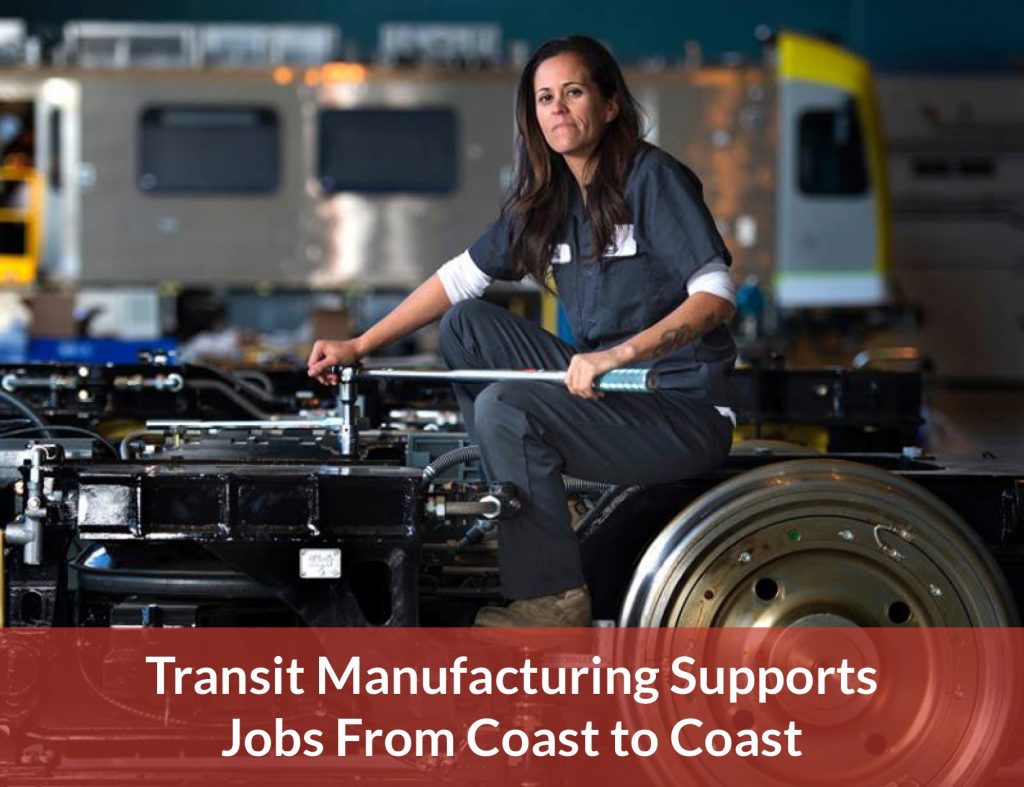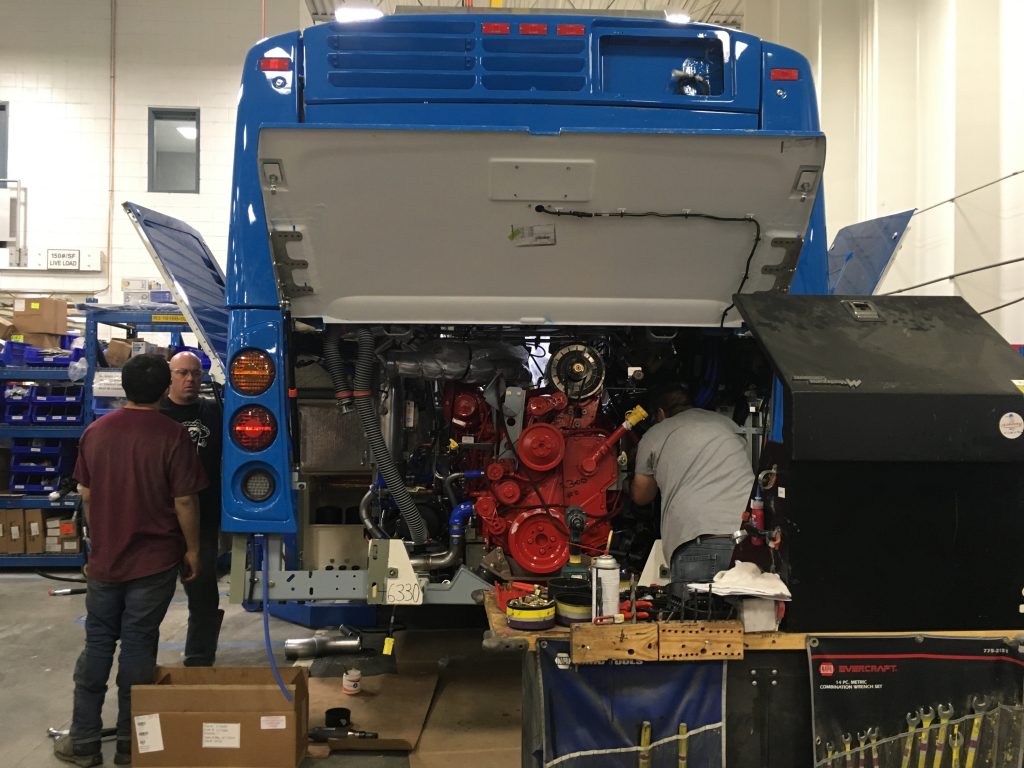
Last week Transportation for America traveled to one of New Flyer of America’s transit bus manufacturing facilities in northern Minnesota to meet with state and local leaders like State Representative Deb Kiel, and get a close look at the economic impact of public transportation dollars on Minnesota manufacturing jobs.
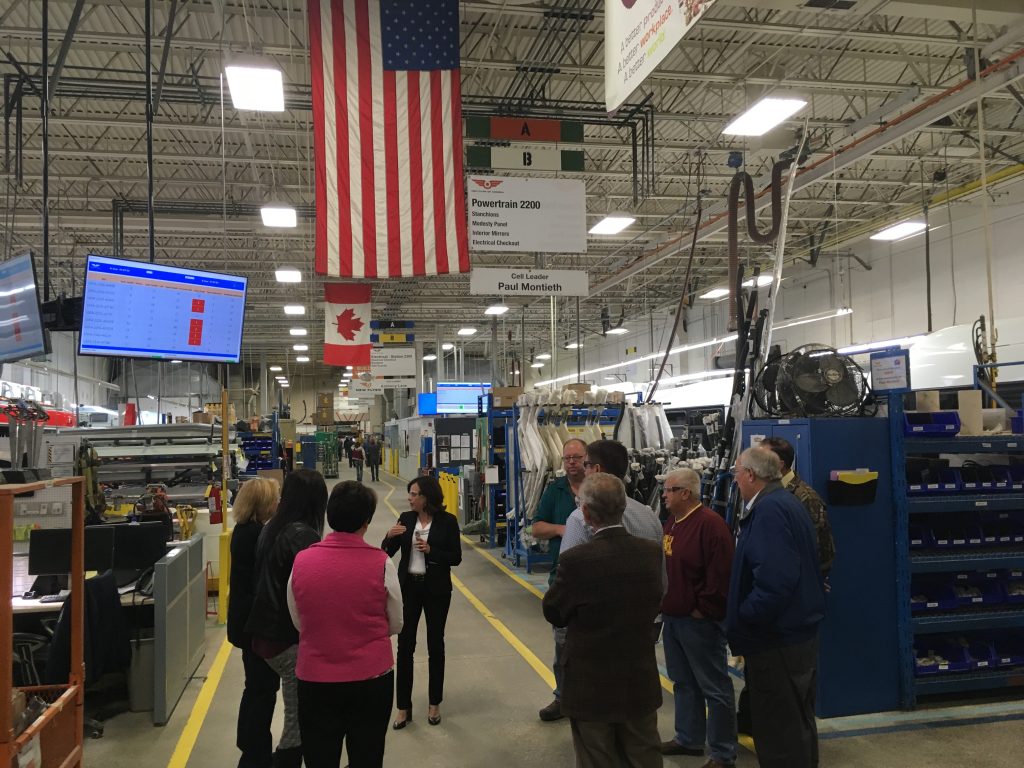
State and local leaders get an inside look at New Flyer of America’s transit bus production line in Crookston, MN. New Flyer proudly flies both the US and Canadian flag as part of NFI Group Inc., a multinational company and North America’s largest bus manufacturer with 31 facilities across the U.S. and Canada.
When Americans think about transit, the first thing that comes to mind might be a bus or train moving people in a coastal, bustling urban area. But the work of manufacturing that bus or railcar—as well as its thousands of component parts— is made possible by the billions in state, local, and federal funds invested in transit each year. And those dollars have effects that ripple out to communities of nearly all sizes across the country.
Last week, we convened state and local leaders like State Representative Deb Kiel, Crookston Mayor Wayne Melbye, staff from U.S. Representative Colin Peterson’s office, and others at New Flyer of America’s transit bus manufacturing facility in Crookston, MN for a discussion about how federal, state, and local money invested in public transportation supports and creates jobs in Minnesota and across the country.
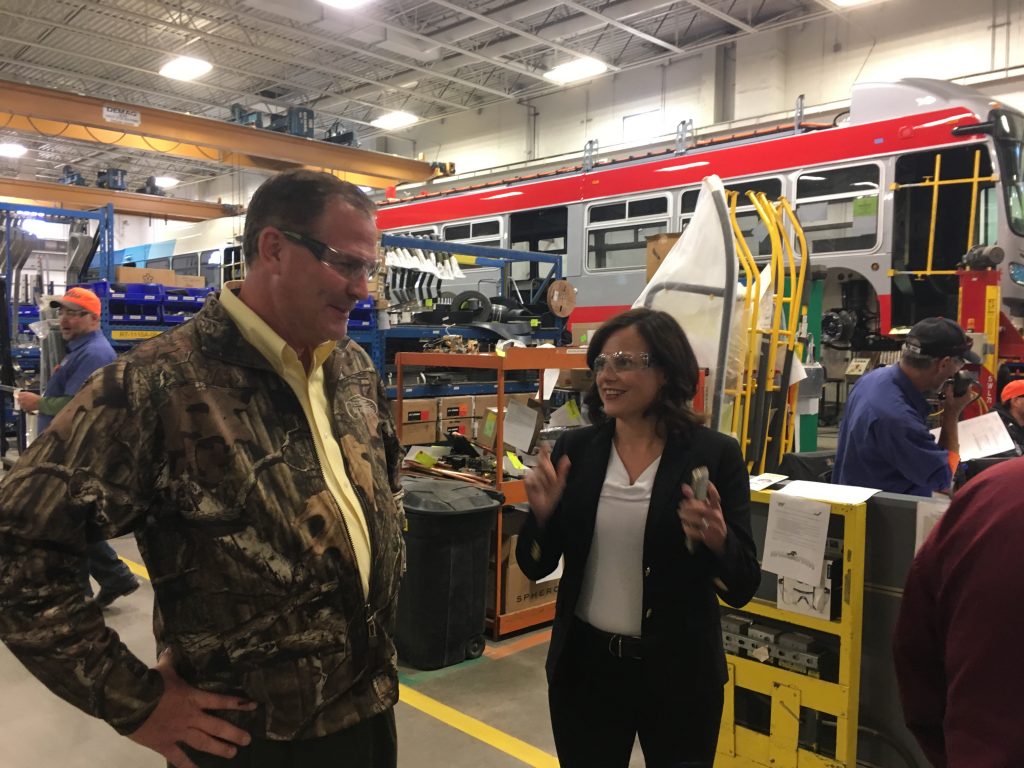
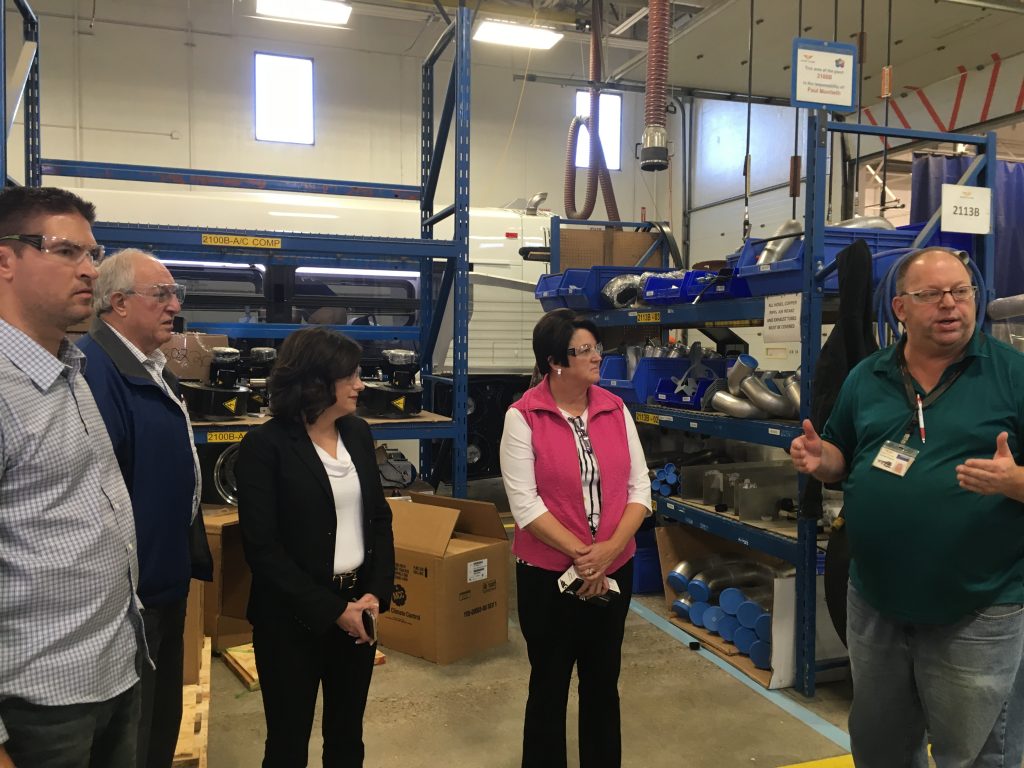
(Left) Jennifer McNeill, New Flyer Vice President of Sales and Marketing talks with Craig Hoiseth, Executive Director at Crookston Housing & Economic Development Authority. (Right) Second from right, Rep. Deb Kiel, and other local leaders hear from New Flyer about the inner workings of the Crookston facility.
Crookston, located in the far northwest corner of the Minnesota, is home to one of New Flyer of America’s four transit bus manufacturing facilities in the U.S. New Flyer of America serves all 25 of the largest transit agencies in North America, and is responsible for about half of the transit buses we see on our roads today.
Each week at the Crookston facility alone, they produce about 20 buses that end up serving communities across the U.S. On the tour we saw technicians in this small, rural community in Minnesota hard at work to build buses destined for cities like Phoenix and San Francisco, painting a compelling picture of just how the supply chain for transit ripples from coast to coast.
New Flyer employs over 1,200 people between its two manufacturing facilities in Minnesota. Like many manufacturers, New Flyer needs a trained and consistent workforce to succeed; both time and money are wasted if you have to retrain a workforce every few years. As Jennifer McNeill, New Flyer Vice President of Sales and Marketing, noted, these are skilled manufacturing jobs, not jobs that can be switched on and off as needed.

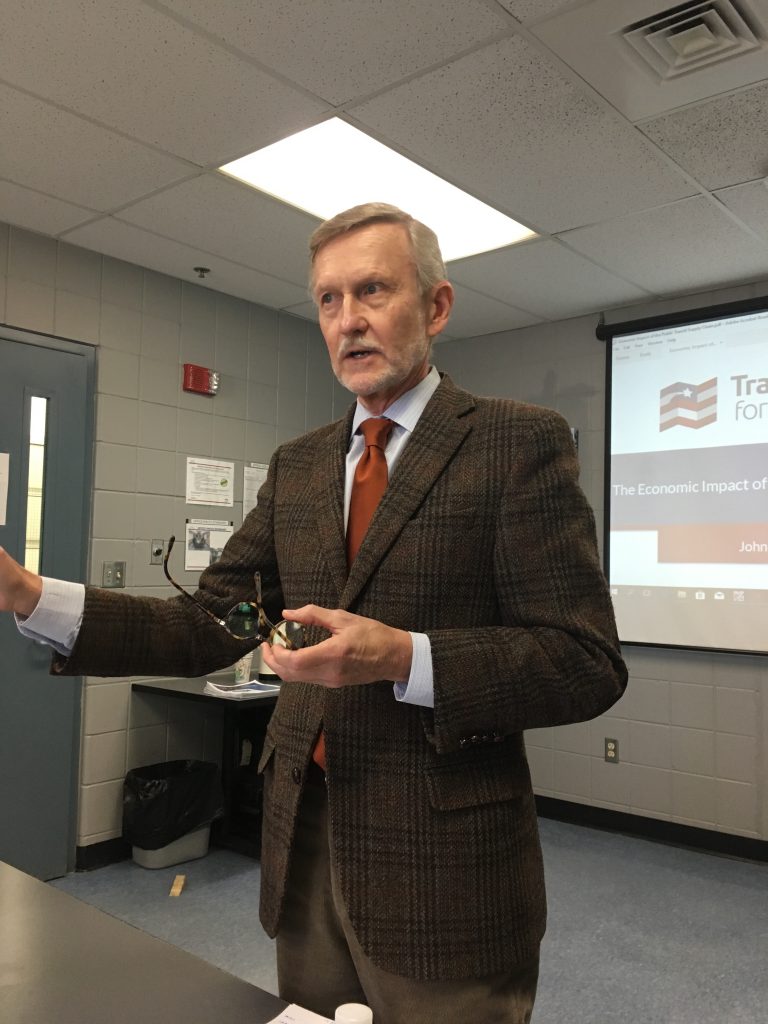
(Left) New Flyer employees building out the inside of a bus. (Right) Chairman of Transportation for America, John Robert Smith, speaks to the economic impact of public transportation dollars on manufacturing jobs.
70 percent of New Flyer’s buses are purchased with public dollars, and it’s clear that these Minnesota manufacturing jobs—and others in Alabama, Indiana, Kentucky, New York, Washington, and Wisconsin—are directly reliant on the federal government continuing to make smart investments in transit.
Unfortunately, ongoing transit funding isn’t entirely certain today. The U.S. Department of Transportation (USDOT) has been slow to award grants from the major federal program that helps communities make new investments in high-quality transit service. But the issue goes beyond discretionary grant programs. Congress has had difficulty passing multi-year transportation funding bills and finding dedicated funding sources for transportation. Before passing the FAST Act in December 2015 (which funds federal transportation investments through 2020), Congress passed 35 short-term extensions, which creates the kind of uncertainty that threatens manufacturing jobs that depend on a stable pipeline of orders and projects.
Federal money invested in public transportation each year leverages local and state funding and supports thousands of high paying manufacturing jobs in communities like Crookston, and in nearly every state across the country. Our recent report on the public transportation supply chain found that 91 percent [396 of 435] of congressional districts host at least one manufacturer.
Without predictable and stable federal and state funding, we may see transit agencies cut projects and be pressured to cancel bus and railcar orders from manufacturers across the country like New Flyer.
Federal investments in transit go far beyond building buses and trains for big cities. The transit supply chain supports high quality, valuable, and sustainable jobs in communities like Crookston all across the country. As members of Congress are considering federal appropriations and future long-term transportation funding bills, they should remember the hard working Americans in communities of all sizes that depend on transit funding.
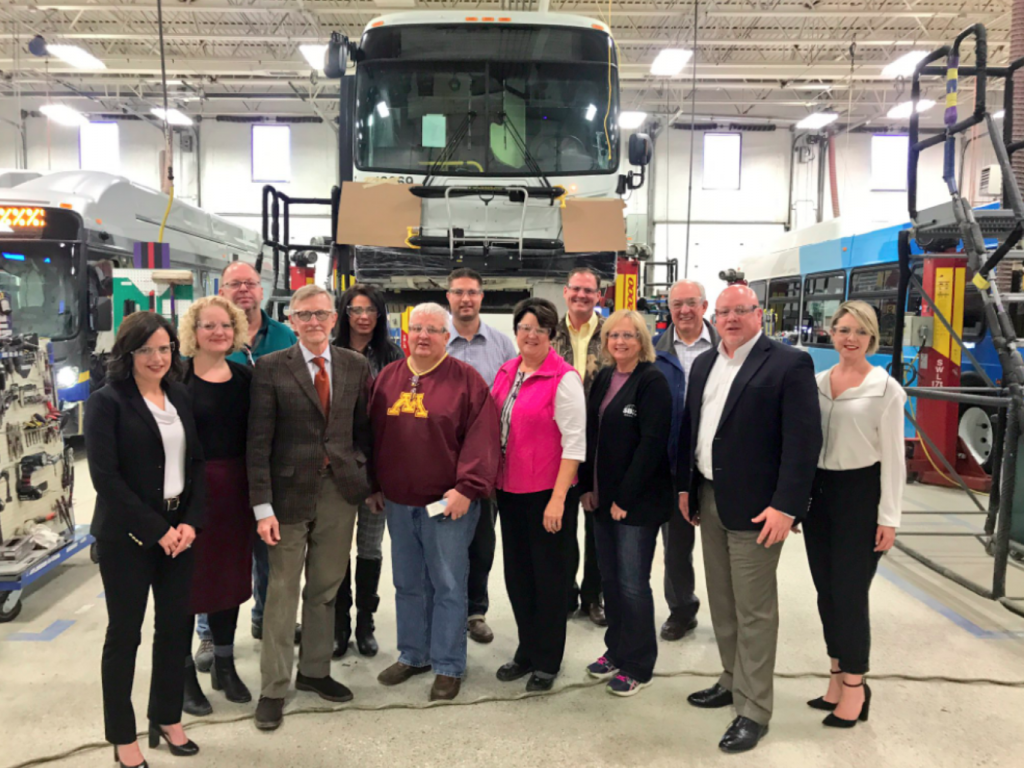
Photo courtesy of New Flyer




